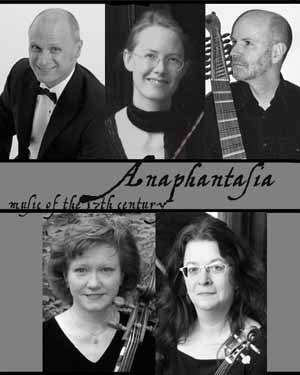
|
 Affetti Musicali Program Notes Music and the Soul's Longing "In the soul are strange states: vibrating strings and other musical tones make on the soul a wonderful impression, and it is not possible to express the wonders of that impession. Sometimes it is expressed as a longing...." al-Ghazali, 1058-1111 This program presents a broad range of moods and colors, created by various Italian masters of the 17th century. The fabled powers of music to move the emotions has long fascinated scholars. During the Renaissance, theorists as well as practical musicians constantly appealed to the authority of Greek antiquity. Revived interest in Aristotle’s Poetics acted as a catalyst for thinking of music in new ways. Aristotle included music, even in purely instrumental form, among the imitative powers, move human affections. In the second half of the 16th century, old parallels of music with grammar were revived and expanded – the sound of language as well as its structure could influence music. These ideas were important for the early madrigalists, and musical composition came to be regarded as a poetic art in itself. Seeking to emulate ancient Greek monody, Giulio Caccini published Le nuove musiche, a collection of solo songs with simple instrumental accompaniment. Caccini boasts that his new style had the power to “move the affect of the soul”. One of his great innovations was to incorporate a traditionally improvised vocal ornamentation into printed music. Composers of the 17th century often used a technique that may be described as imitatio: the conscious use of material from a specific composition by another composer. Claudio Monteverdi’s five-part setting of Sfogava con le stelle owes a substantial debt to Caccini’s setting of the same text as a solo song with accompaniment in Le nuove musiche, and suggested that it may have been composed as a reaction to Caccini’s polemic against the polyphonic madrigal. A contrast to this richly textured madrigal is Monteverdi’s virtuose setting of a portion of the Song of Salomon, Pulchra es, for two sopranos and basso continuo. Biagio Marini’s Affetti Musicali, a collection of sinfonias, sonatas, and dances for one or two instruments with basso continuo, also reflects the ideal of communication through an intimate medium – small ensembles, compositionally simple but harmonically extremely rich. Maurizio Cazzati, as maestro de Capella at San Petronio in Bologna, made a significant contribution to instrumental ensemble music. His vocal music is characterized by charming simplicity, conservative harmonies and supple melodies with virtuoso passages. Knowledge of the life and work of Giovanni Battista Fontana, Brescian violinist and composer, is confined to a few documents, the most extensive of which is the preface to a posthumous memorial publication of 18 Sonatas. |